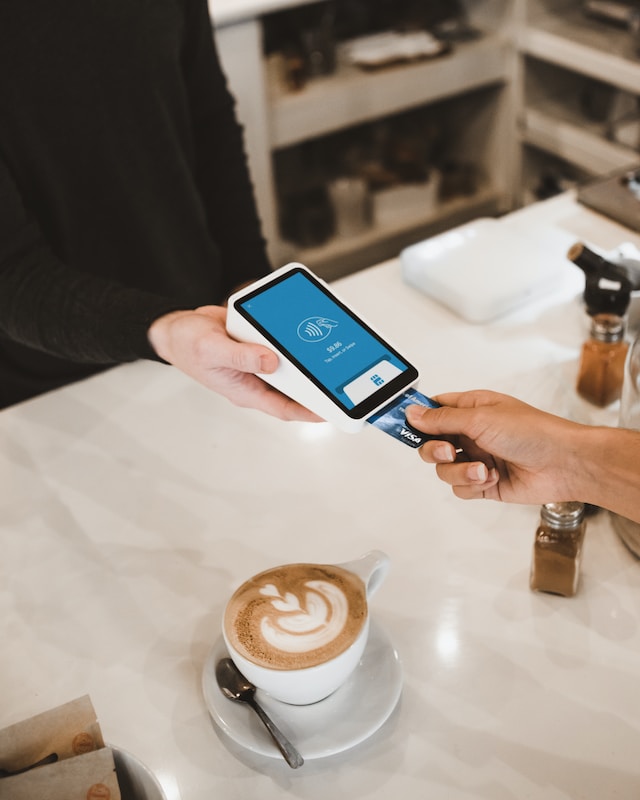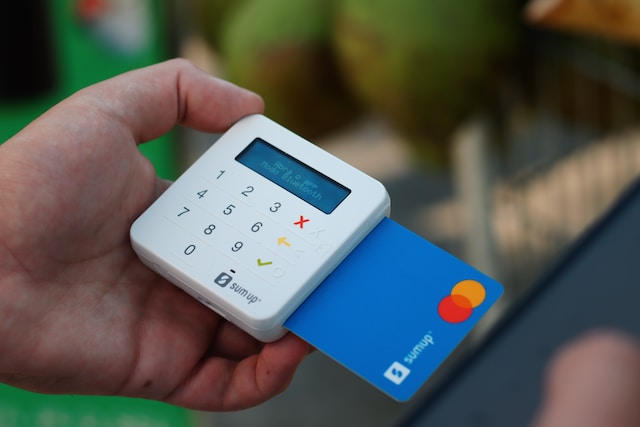Card readers are a standard tool for making transactions with credit and debit cards, but many people need to be aware of the associated security risks. Understanding how to secure your transactions is crucial in today’s digital age.
Did you know that credit card skimmers are becoming more sophisticated and challenging to spot? This blog post will provide you with essential knowledge about card reader security and practical tips to safeguard your transactions. So, let’s dive into what you need to know to protect yourself from potential fraud!
What is a card reader?
A card reader is a device that can read the information stored on credit or debit cards. You often see them in stores or at ATMs. You slide, tap, or insert your card into the credit card reader when you want to buy something.
This gadget then gets the data from your card’s magnetic strip or chip and sends it to the bank for approval.
These readers come with security measures like EMV technology, which stands for Europay, MasterCard, and Visa. It’s a global standard for chip card security that makes transactions safer.
Many also use data encryption to protect your details during a transaction. Plus, some offer PIN protection, where you enter a secret number so only you can use your card. Contactless payment options are available, too – just wave your card near the reader without touching it!
How do card readers work?
Moving from what a card reader is to how it functions, these devices are designed for transaction protection. They read your credit or debit card information when you slide, tap, or insert it.
Inside the reader is a particular part that can pick up the data stored in your card’s magnetic strip or chip. This info then gets sent securely to banks and other financial systems so they know who’s paying.
Card readers check many details like your card number and expiry date. They make sure everything matches before approving any payment. Doing this quickly and safely helps stop fraud from happening during transactions.
That’s why different security features are built into them for payment terminal security. These features work together to keep your money safe whenever you buy something with your card.
Types of credit card readers
Now that you understand how card readers work let’s delve into the types of credit card readers. Traditional countertop credit card machines are often used in retail stores and restaurants.
These devices can be wireless or wired and are usually integrated with a point-of-sale (POS) system for easy transaction processing. Another type is the mobile credit card reader, which can be attached to a smartphone or tablet, allowing small businesses and vendors to accept payments on the go.
Some virtual terminal readers also enable merchants to process credit card payments through a computer by manually entering the customer’s payment details.
Understanding Card Reader Security
Spot and avoid credit card skimmers while learning key measures to prevent credit card skimming. Understand the security features of various credit card readers to ensure your transactions are safe.
How to spot and avoid credit card skimmers
Credit card skimmers are sneaky devices placed on legitimate card readers to steal your information. To avoid falling victim, inspect the card reader for any unusual attachments or loose parts before using it.
Cover the keypad with your hand when entering your PIN to prevent hidden cameras from recording it. Look for tamper-evident seals and use chip-enabled cards to reduce the risk of skimming.
Always be cautious and protect yourself by regularly checking your bank statements and reporting suspicious activity immediately. If you suspect a compromised card reader, immediately notify the establishment and alert law enforcement to help prevent others from becoming victims of credit card skimmers.
How to prevent credit card skimming
To prevent credit card skimming, be cautious of ATMs and card readers that appear unusual or have loose parts. Cover the keypad when entering your PIN at an ATM or a point-of-sale terminal.
Regularly monitor your bank statements and report any suspicious transactions immediately. Additionally, use chip-enabled cards whenever possible for enhanced security against skimming devices.
By being vigilant and proactive in safeguarding your card information, you can reduce the risk of falling victim to credit card skimming scams.
Card reader security measures
Card reader security measures are essential to protect your transactions. Look for EMV chip card readers, which provide better security than traditional magnetic stripe readers. Use point-to-point encryption (P2PE) technology to safeguard cardholder data during payment processing.
This encryption method ensures that sensitive information is unreadable if intercepted by unauthorized parties.
Moreover, consider using contactless payment methods such as mobile wallets or tap-and-go cards to minimize physical interaction with the card reader. These methods add an extra layer of security by generating a unique transaction code for each purchase.
By incorporating these security measures, you can significantly reduce the risk of fraud and protect your transactions from potential threats.
Protecting Your Transactions
Using credit card readers offers benefits such as convenience and security, but it’s important to stay vigilant against potential scams. Learn how to protect yourself and what steps to take if your card is compromised.
Credit card readers offer convenience by allowing customers to pay with their preferred method. They speed up transactions, leading to shorter wait times for your customers. Additionally, they reduce the risks of handling cash and checks, making it easier for businesses to manage their revenue securely.
Furthermore, credit card readers provide professionalism that enhances customer trust in your business.
By using credit card readers, businesses can streamline their payment processes and provide a seamless experience for customers. This increases customer satisfaction and helps build a positive reputation for the business as being modern and efficient.
Ways to stay safe from credit card scams
To stay safe from credit card scams, always shield your PIN when entering it at a card reader. Regularly check your bank statements and be cautious of any unfamiliar transactions. Avoid using public Wi-Fi for making online purchases or accessing sensitive financial information.
Be wary of unsolicited emails or calls asking for your credit card details, and never share this information with anyone over the phone unless you initiated the call yourself.
Understanding how to protect yourself is crucial in preventing credit card scams, but knowing what to do if you fall victim to one is equally important. By familiarizing yourself with these steps, you can take quick action and minimize potential damage to your finances and personal information.
Steps to take if your card is compromised
If you discover that your card has been compromised, act quickly. Contact your bank to report the unauthorized charges and request a new card. It’s crucial to monitor your account for any further suspicious activity.
Now, let’s delve into understanding how credit card readers work and the types of security measures in place to protect your transactions.
Conclusion
In conclusion, knowing card reader security is crucial in safeguarding your transactions. You can protect yourself effectively with simple measures such as checking for skimmers and staying informed about fraud prevention.
By implementing these practical steps, you can ensure the efficiency and safety of your transactions. How will you apply these strategies to enhance your transaction security? The impact of securing card readers extends beyond personal protection; it contributes to overall fraud reduction in financial systems.
Stay informed and take proactive steps to secure your transactions today.
FAQs
1. What is card reader security?
Card reader security means keeping your card and personal information safe when you use a machine to read your credit or debit card.
2. Why is protecting my transactions important?
Protecting your transactions helps stop fraud, which keeps your money and information out of the wrong hands.
3. How can I keep my card safe as a reader?
Always cover the keypad when you enter your PIN, check for strange devices on the reader, and only use readers in well-lit, busy places.
4. What should I do if I think a card reader is insecure?
If something seems wrong with a card reader, use it sparingly. Instead, tell someone who works there right away so they can fix it.


